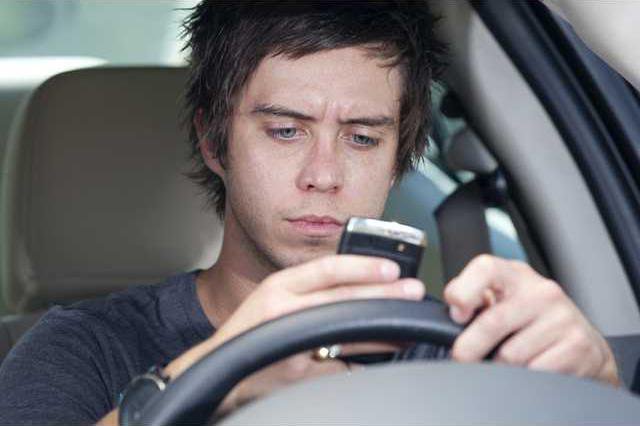Giving in to the temptation to talk with friends or answer texts while driving holds serious consequences for teens behind the wheel, according to a new study from the AAA Foundation for Traffic Safety, which found that six in 10 car crashes involving teen drivers were linked to distracted driving.
"Access to crash videos has allowed us to better understand the moments leading up to a vehicle impact in a way that was previously impossible," said AAA president and CEO Peter Kissinger in a press release. "The in-depth analysis provides indisputable evidence that teen drivers are distracted in a much greater percentage of crashes than we previously realized."
The study investigated nearly 1,700 crash videos "from an in-car system many families install in the vehicles of young drivers to keep track of their movements and habits," The Washington Post reported.
The Post's coverage included a video of accident clips, showing teens texting before veering off the road and slamming on the brakes after being distracted by a friend in the passenger seat.
Of the crashes linked to distracted driving, 15 percent were due to the drivers' interaction with other passengers and 13 percent were attributed to cellphone use, The New York Times noted.
"Half the time in rear-end crashes, teenagers using cellphones failed to react at all in the moments before the crash," the Times reported.
AAA's press release highlighted the importance of laws that limit teen drivers' access to risky behaviors. "Thirty-three states have laws that prevent cellphone use for teens and 18 states have passenger restrictions," it noted.
But with or without laws to back up their rules, parents "play a critical role in preventing distracted driving," according to the AAA. They can set ground rules at the beginning of their driving careers, making it clear that distracted driving is not an option.
"Parents need to talk to their kids early and often about safe driving (and) they should reinforce what they say by modeling safe driving practices," notes a resource guide for teen driver safety from Find Youth Info.
Additionally, the Centers for Disease Control and Prevention compiles safety research on its website, encouraging parents to talk to their kids about the "eight danger zones" impacting teen drivers, which include driver inexperience, driving with teen passengers, night-time driving, failing to use seat belts and drowsy driving.
"Access to crash videos has allowed us to better understand the moments leading up to a vehicle impact in a way that was previously impossible," said AAA president and CEO Peter Kissinger in a press release. "The in-depth analysis provides indisputable evidence that teen drivers are distracted in a much greater percentage of crashes than we previously realized."
The study investigated nearly 1,700 crash videos "from an in-car system many families install in the vehicles of young drivers to keep track of their movements and habits," The Washington Post reported.
The Post's coverage included a video of accident clips, showing teens texting before veering off the road and slamming on the brakes after being distracted by a friend in the passenger seat.
Of the crashes linked to distracted driving, 15 percent were due to the drivers' interaction with other passengers and 13 percent were attributed to cellphone use, The New York Times noted.
"Half the time in rear-end crashes, teenagers using cellphones failed to react at all in the moments before the crash," the Times reported.
AAA's press release highlighted the importance of laws that limit teen drivers' access to risky behaviors. "Thirty-three states have laws that prevent cellphone use for teens and 18 states have passenger restrictions," it noted.
But with or without laws to back up their rules, parents "play a critical role in preventing distracted driving," according to the AAA. They can set ground rules at the beginning of their driving careers, making it clear that distracted driving is not an option.
"Parents need to talk to their kids early and often about safe driving (and) they should reinforce what they say by modeling safe driving practices," notes a resource guide for teen driver safety from Find Youth Info.
Additionally, the Centers for Disease Control and Prevention compiles safety research on its website, encouraging parents to talk to their kids about the "eight danger zones" impacting teen drivers, which include driver inexperience, driving with teen passengers, night-time driving, failing to use seat belts and drowsy driving.








